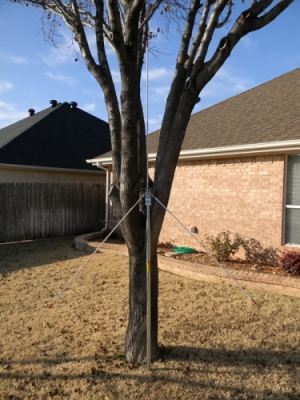I think the picture of the hub is an original GPK hub with four radials slanted down and three radials horizontal. I just drilled and tapped for three added horizontal radials.
I don't recall working my Marconi on air with only one sloping radial, but I did test the idea near 18' feet. My Eznec model of the idea also shows one radial will work very well, and depending on your mounting being well into the clear and at least 18' feet high, the antenna should work just fine.
As I removed radials from my antenna during my testing, I did find the antenna, with only one slanted element (radial), the match tended to be more like a full 1/2 wave dipole R=70 ohms J= <>0 ohms. So the match suffered a bit, but it was nothing to worrying about, the SWR was still below 1.50:1 at the radio.
Can you briefly explain to me how an impedance of 70 ohms affects performance compared to the desired 50 ohms? I've never understood the effect of impedance on antennas.
Also, would the use of a 1:1 current balun fix the 70/50 mismatch? Or would this be unnecessary?
Thanks!
Last edited:

